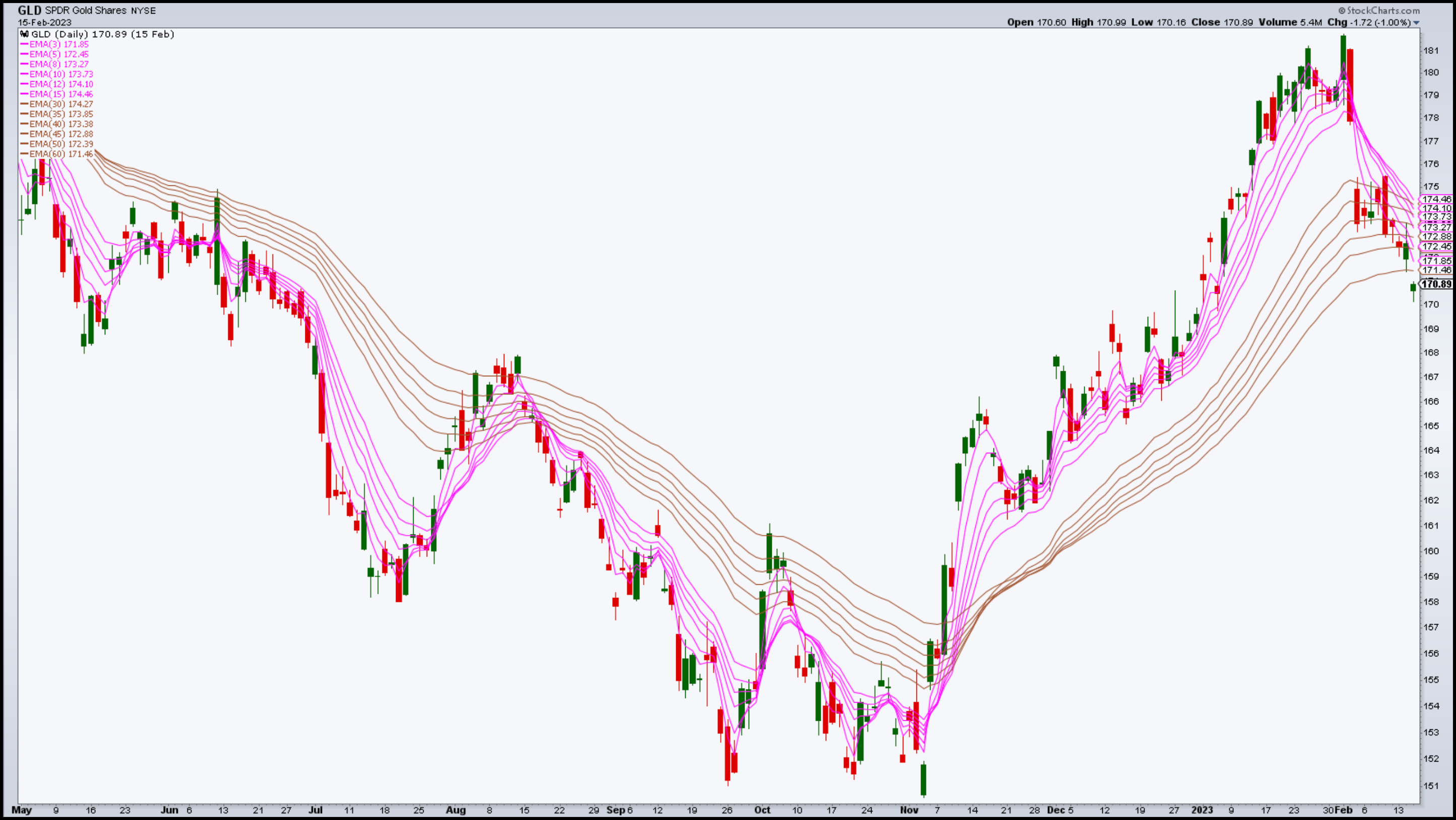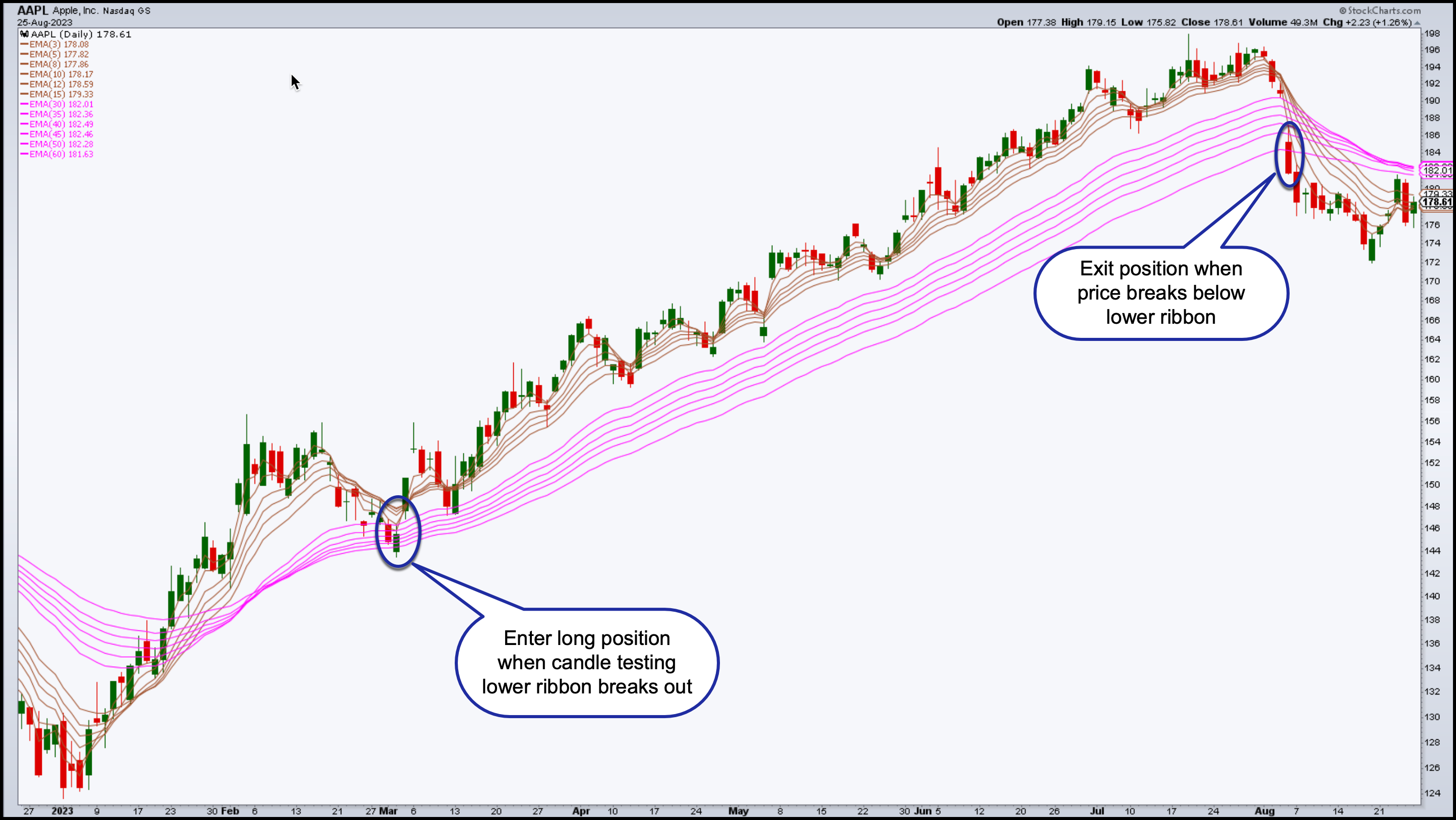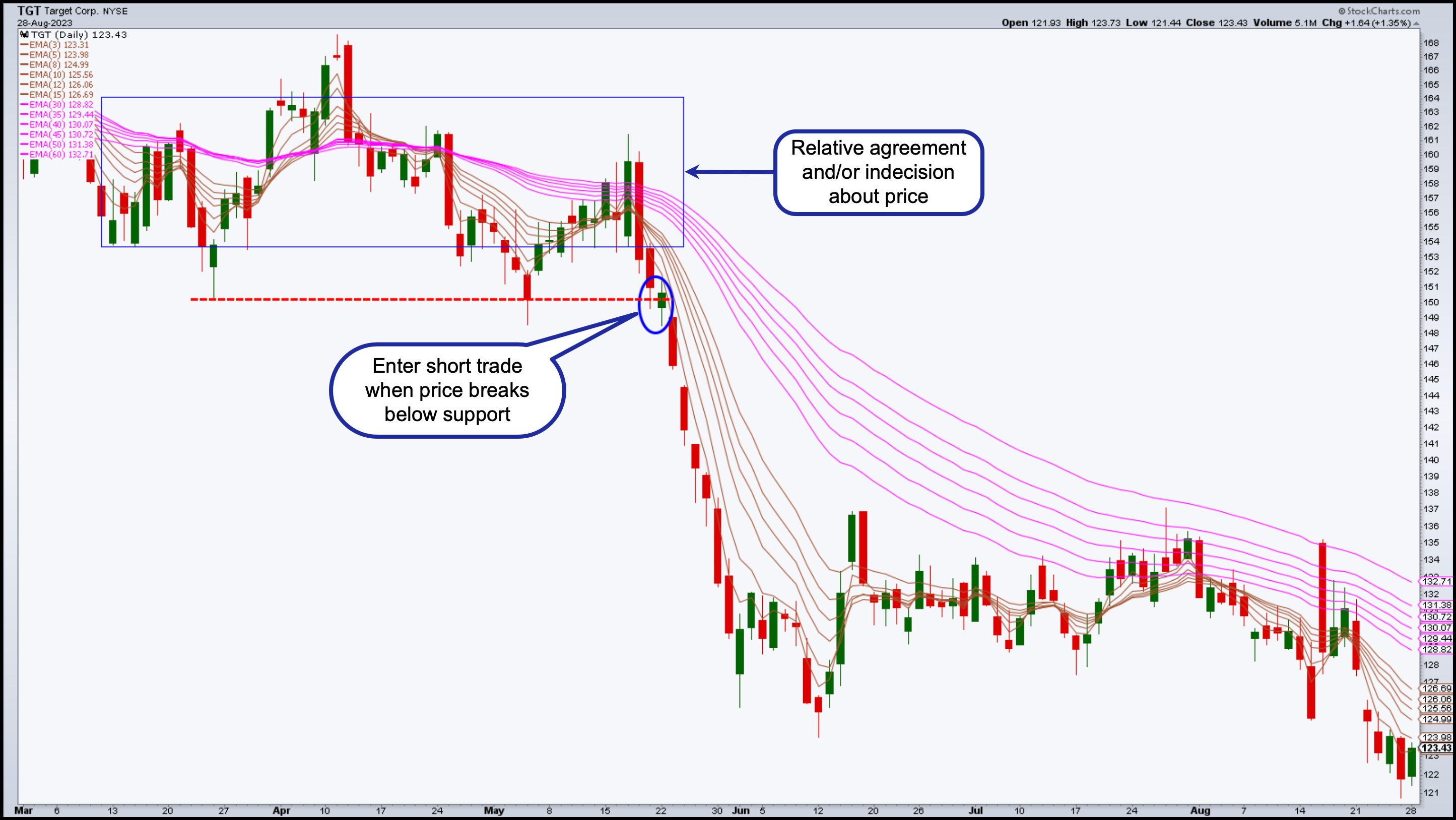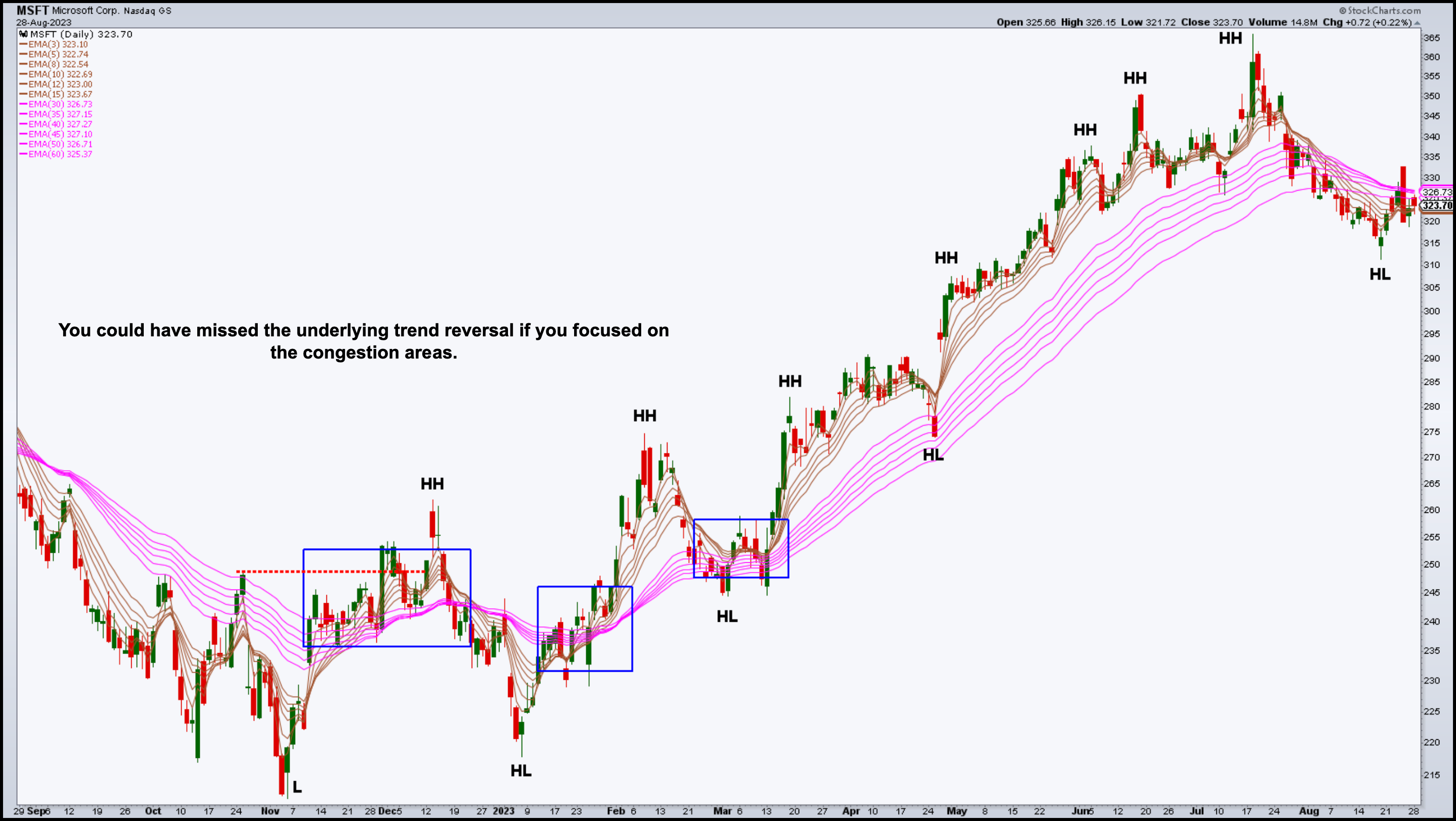|
|
Table of Contents
Guppy Multiple Moving Average: An MA Ribbon Designed to Tip the Market’s Hand
KEY POINTS
- The Guppy Multiple Moving Average is a moving average ribbon that combines 12 exponential moving averages
- The two “halves” of the GMMA serve as a proxy for short-term and long-term market participants
- Explore how to make informed trading decisions by observing the crossover of the ribbons and compression or expansion of the gap between them
Moving averages, at their most basic function, are designed to help you identify trends. From that, you can assess market sentiment, decide on the likely course of price action, and determine trading opportunities and risks.
But what if you can use moving averages to possibly track what short-term traders and longer-term institutional investors are thinking? Although there’s no 100% foolproof way to “know” this, you can get pretty close by using Moving Average Ribbons as a proxy for both sets of speculators. Enter the Guppy Multiple Moving Average (GMMA)—a set of 12 moving averages designed to track short-term and long-term market sentiment.
What is the Guppy Multiple Moving Average?
The Guppy Multiple Moving Average is a moving average ribbon comprised of six short-term exponential moving averages (EMAs) and six long-term moving averages, both separated by a space, that reveals changes in the near-term and longer-term trend.
By seeing what may be going on in both camps (short and long-term), the GMMA can help you make better-informed trading decisions. The two sets of ribbons are virtual “proxies” for shorter-term traders and longer-term investors.
What are the Components of a GMMA?
The short-term EMA ribbon includes the 3, 5, 8, 10, 12, and 15-day EMAs. This ribbon is your proxy for the traders who trade the shorter-term trends.
The long-term EMA ribbon comprises 30, 35, 40, 45, 50, and 60-day EMAs. This ribbon represents investor and institutional sentiment.
Note that the “gap” between the 15-day EMA and the 30-day EMA. This gap helps separate the two proxies, and the distance between them in a chart can help you assess the overall strength and momentum of a stock’s trend.
Here's what it looks like in action.

How Do You Interpret Trends with the GMMA?
Three conditions can appear clearly when viewing a GMMA on a chart.
Bullish Conditions. When the short-term ribbon crosses above the long-term ribbon, an uptrend may be emerging. The more “spread-out” the ribbons, the stronger the trend. This means that the shorter-term traders are taking action to exploit the rally ahead of the longer-term investors. The more “spread-out” the ribbons, the stronger the trend.
Bearish Conditions. When the short-term ribbon crosses below the long-term ribbon, a downtrend may be emerging. This means that the shorter-term traders are taking early action to sell the stock while longer-term investors are still deciding on their positions. Again, ribbons in “full-sail” indicate a stronger trend.
Sideways Conditions. When the shorter-term ribbon converges into the longer-term ribbon, this means that both short-term traders and long-term investors are in “agreement” on the value of a stock. This also means that there is no trend for the time being.
How to Trade a Trend Using the GMMA
How can you make this actionable? Like all indicators, your specific entry and exit rules depend on your strategy. However, here’s one simple way to trade GMMA ribbons.
Buy Signal When the short-term ribbons cross above the long-term ribbons, it signals a green light for long positions. Entering the trade should be in accordance with your trading approach. Here’s an example.

In the example above, you might have entered a long trade on the breakout of the candle testing the lower ribbon. Remember that the lower half of the ribbon is a proxy for longer-term investors, making it a potentially effective support level. You wait for the breakout to confirm your “support” thesis.
Sell Signal
The same can be said for a short position (sell entry). Take a look at the next example.

Sideways Breakout
Similar to a low-volatility reading using Bollinger Bands, a convergence or “compression” of both sets of ribbons typically happens when there’s little volatility. That’s because everyone seems to agree with the price of a stock.
But this also indicates that a breakout in either direction may soon occur. After all, no stock can hold the same price or hover at the same range forever. What’s important in this case is to contextualize the price action from a broader perspective. Here’s one example illustrating how not to “miss the forest for the trees.”

If you were too focused on the position of the two halves of the ribbon (the “trees”), particularly in the areas of congestion, you might have missed the formation of the uptrend that was rather obvious (the “forest”). The uptrend began with a breakout of a local swing high (red dotted line), and from that point on, you can see the series of higher highs (HH) and higher lows (HL) that formed into a sustained uptrend.
The Bottom Line
The Guppy Multiple Moving Average (GMMA) is a moving average ribbon that can help you gauge market sentiment by serving as a visual proxy for short-term traders and long-term investors. By visualizing the interplay of these two groups, you can identify potential trends and reversals. Remember that while the GMMA provides valuable information, it can be used with other tools to analyze the broader market context better.
